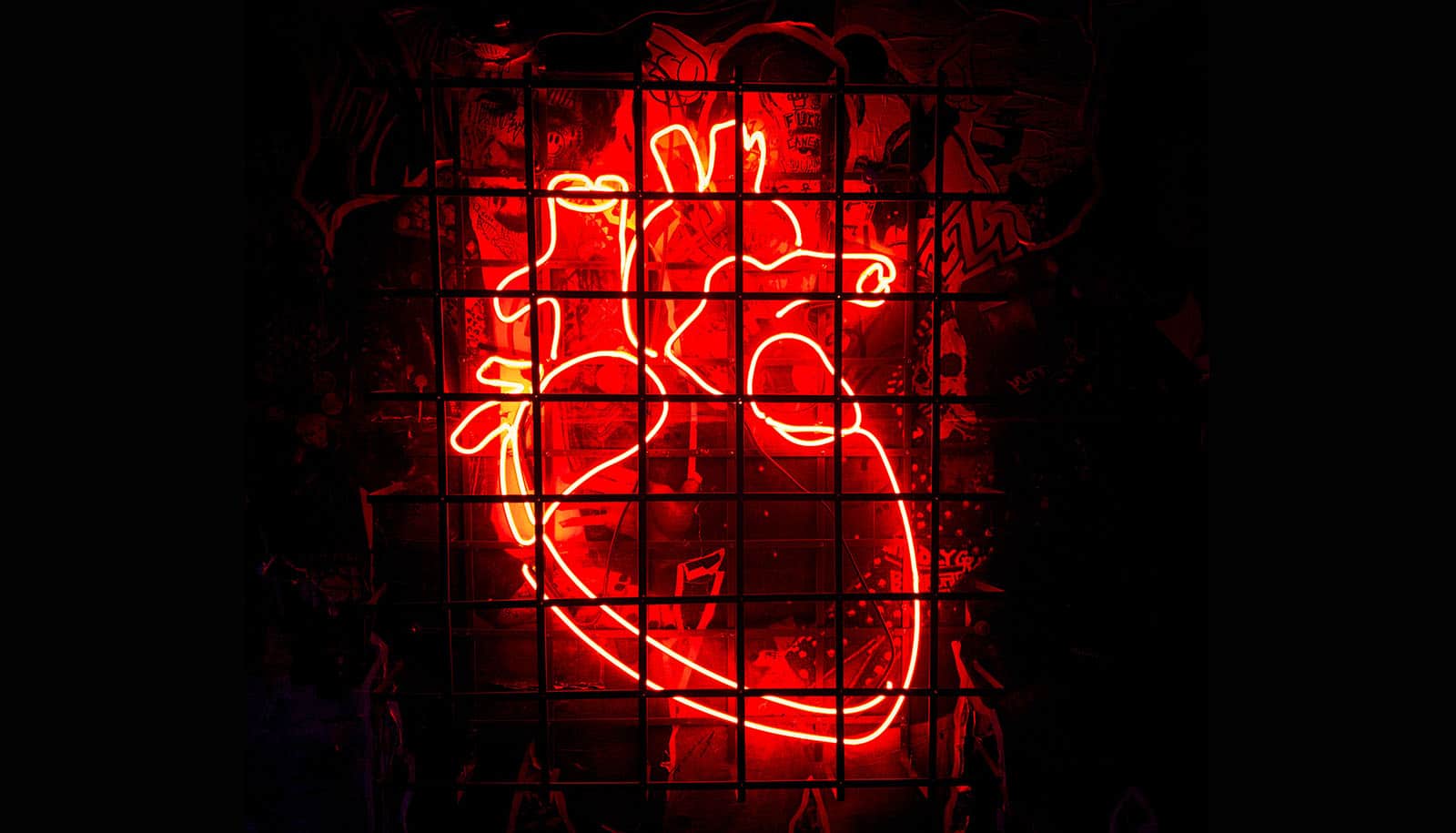Female and male hearts respond differently to the stress hormone noradrenaline, according to a new study with mice.
The findings may have implications for human heart disorders like arrhythmias and heart failure and how different sexes respond to medications.
For the study, researchers built a new type of fluorescence imaging system that allows them to use light to see how a mouse heart responds to hormones and neurotransmitters in real time. They exposed mice to noradrenaline, also known as norepinephrine. Noradrenaline is both a neurotransmitter and hormone associated with the body’s “fight or flight” response.
The results reveal that male and female mouse hearts respond uniformly at first after exposure to noradrenaline. However, some areas of the female heart return to normal more quickly than the male heart, which produces differences in the heart’s electrical activity.
“The differences in electrical activity that we observed are called repolarization in the female hearts. Repolarization refers to how the heart resets between each heartbeat and is closely linked to some types of arrhythmias,” says Jessica L. Caldwell, a postdoctoral scholar in the pharmacology department at the University of California, Davis School of Medicine and first author of the paper in Science Advances.
“We know that there are sex differences in the risk for certain types of arrhythmias. The study reveals a new factor that may contribute to different arrhythmia susceptibility between men and women,” Caldwell says.
Electrical activity of male and female hearts
Heart disease is the leading cause of death for both men and women in the United States. It accounted for about 1 in every 4 male deaths and 1 in every 5 female deaths in 2020. Despite the impact on both sexes, cardiology research has largely been performed on male subjects.
In this study, the researchers were interested in looking at factors that may contribute to arrhythmias. Arrhythmias are a type of heart disorder where the electrical impulses that control heartbeats don’t function properly. They affect somewhere between 1.5% to 5% of the population.
The novel imaging system uses a mouse, called the CAMPER mouse, that has been genetically modified to emit light during a very specific chemical reaction in the heart—cAMP binding.
The cAMP molecule (an abbreviation of cyclic adenosine 3′,5;-monophosphate) is an intermediate messenger that turns signals from hormones and neurotransmitters, including noradrenaline, into action from heart cells.
The light signals from the CAMPER mouse are transmitted by a biosensor that uses fluorescence resonance energy transfer (FRET). This FRET signal can be picked up at high speed and high resolution by a new imaging system specially designed for hearts. This allows the researchers to record the heart’s reaction to noradrenaline in real time, along with changes in electrical activity.
This new imaging approach revealed the differences in the breakdown of cAMP in female and male mice and the associated differences in electrical activity.
Unsuspected differences
The researchers had not planned to study sex-based responses, according to senior author Crystal M. Ripplinger, an electrical and biomedical engineer and professor in the pharmacology department. But they started seeing a pattern of different reactions, which led them to realize the differences were sex-based.
When she started her lab at the UC Davis School of Medicine over a decade ago, Ripplinger exclusively used male animals. That was the norm for most research at the time. But several years ago, she began including male and female animals in her studies.
“Sometimes the data between the two sexes is the same. But if the data start to show variation, the first thing we do is look at sex differences. Using both male and female mice has revealed clues into differences we would never have suspected. Researchers are realizing you can’t extrapolate to both sexes from only studying one,” Ripplinger says.
She notes that with the current study, it’s not clear what the differences in cAMP and electrical activity may mean.
“The response in the female mice may be protective—or it may not. But simply documenting that there is a measurable difference in the response to a stress hormone is significant. We are hoping to learn more in future studies,” Ripplinger says.
Additional coauthors are from Mansoura University, VA Northern California, and UC Davis. The National Institutes of Health, the American Heart Association, and the Veterans Administration Merit Grant funded the work.
Source: UC Davis



